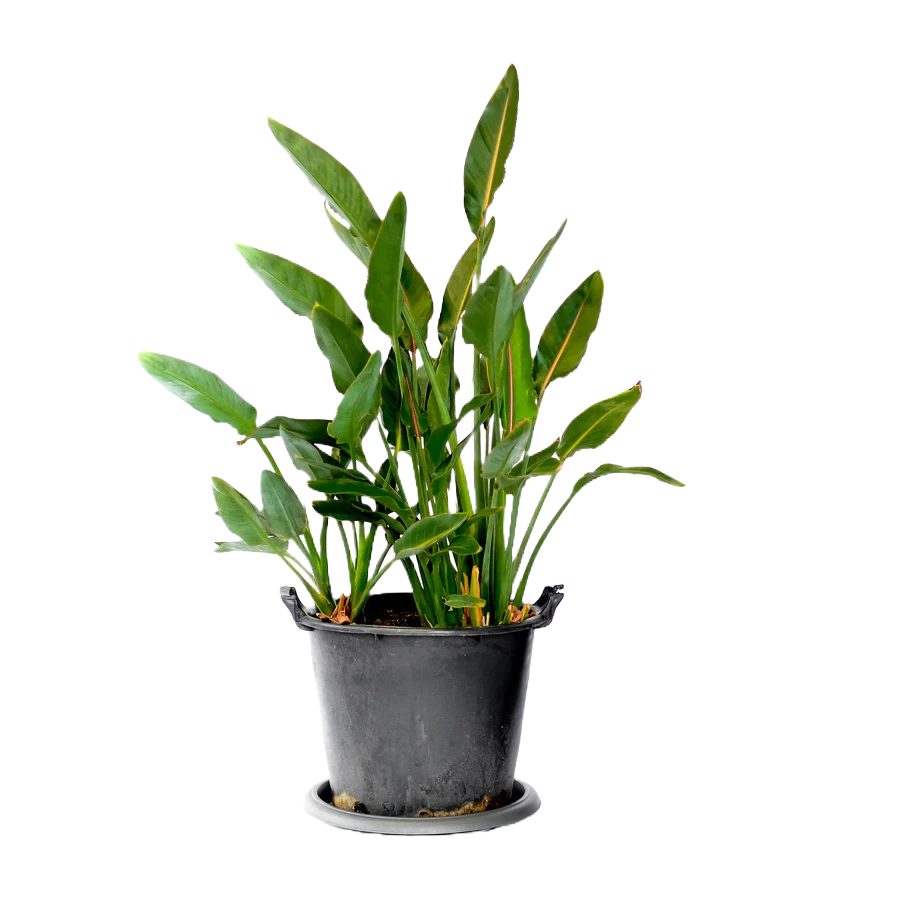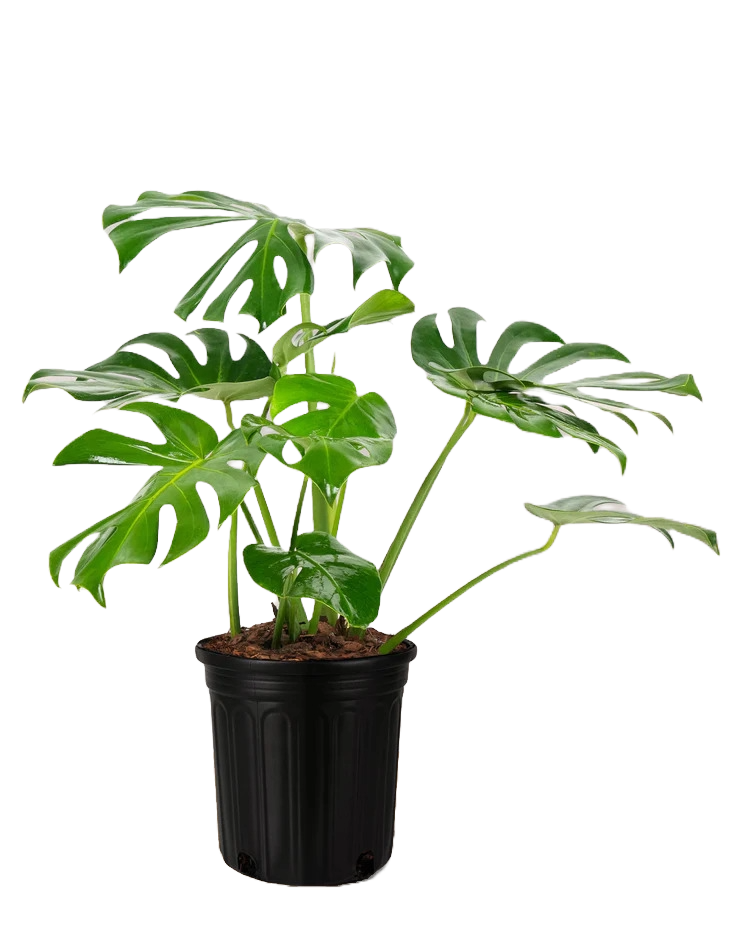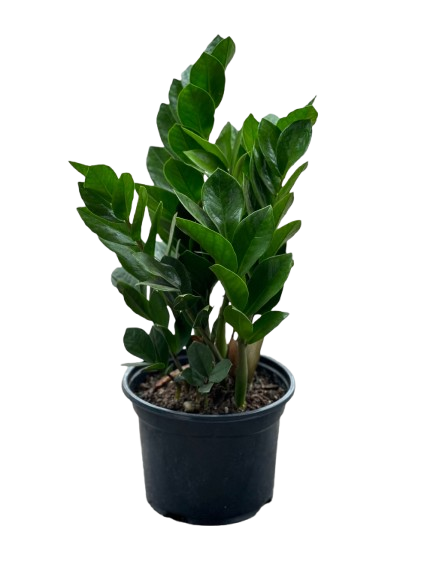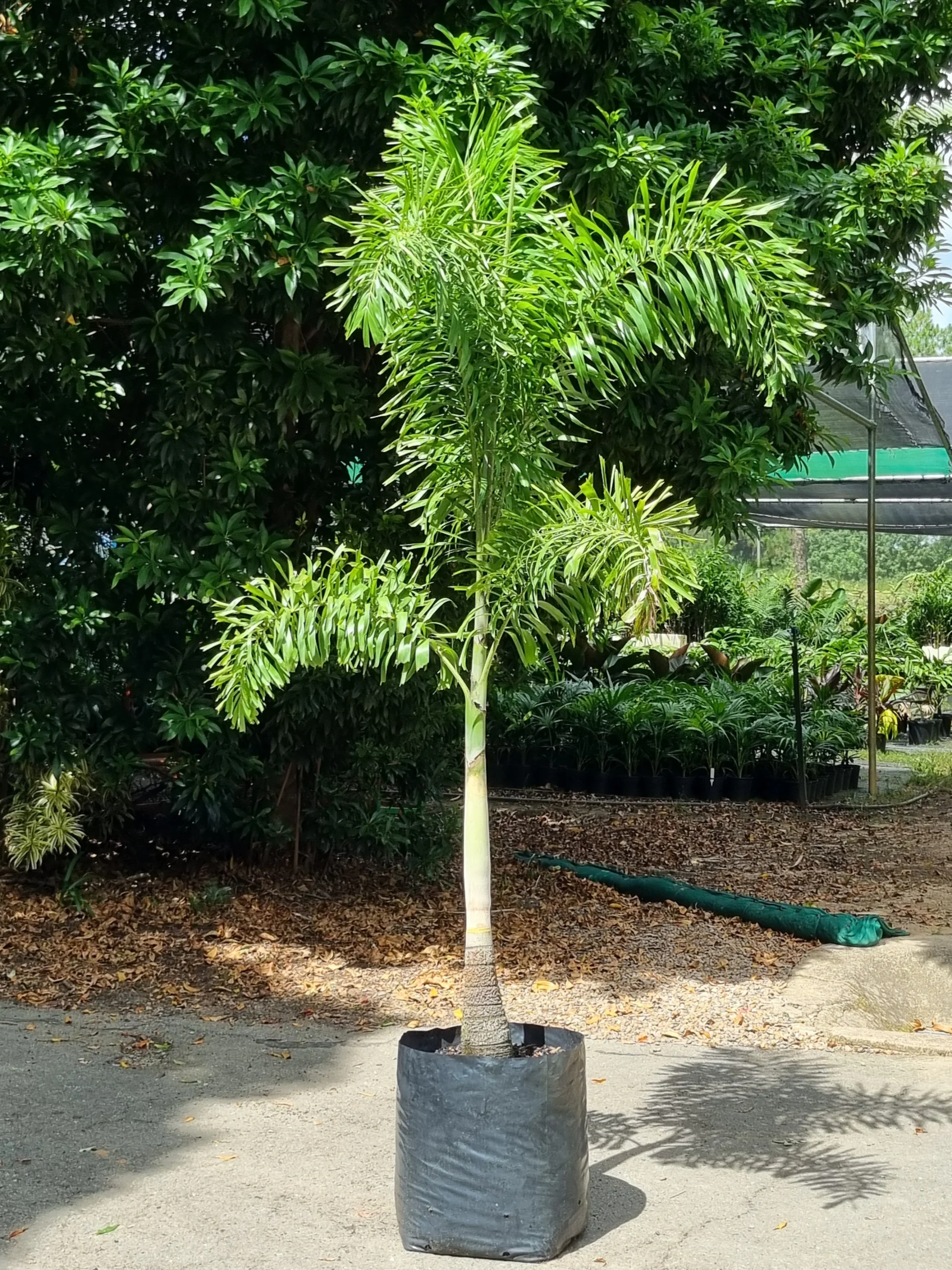The Foxtail Palm (Wodyetia bifurcata) is a stunning ornamental palm loved for its lush, feathery fronds that resemble a fox’s tail. Native to Australia, it has become a popular landscaping choice in Kenya for gardens, resorts, and large compounds. With its elegant trunk and fast growth, the foxtail palm brings a tropical feel to outdoor spaces and thrives in warm climates across the country.
Why Grow This Plant?
- Fast-growing and adds instant tropical beauty to landscapes.
- Low-maintenance once established, needing minimal care.
- Drought-tolerant and adapts well to Kenya’s warm climate.
- Ideal for lining driveways, swimming pool areas, and gardens.
- Resilient against strong winds compared to many other palms.
Cultural & Historical Significance
The Foxtail Palm was discovered in Northern Australia and introduced to the world only in the late 20th century. Its graceful fronds made it highly desirable for landscaping projects globally. In many cultures, palms symbolize prosperity, resilience, and tropical elegance, making the foxtail palm a popular addition to luxury resorts and private gardens.
Ideal Growing Conditions in Kenya
- Sunlight: Full sun for best growth and frond development.
- Temperature: Thrives in warm climates between 20°C–32°C.
- Soil: Well-draining sandy or loamy soil enriched with organic matter.
- Watering: Moderate watering; drought-tolerant once established.
- Best Regions: Coastal areas like Mombasa, Malindi, and warm inland regions such as Nairobi, Kisumu, and Naivasha.
How to Plant It
- Select a healthy foxtail palm seedling from a nursery.
- Dig a wide planting hole twice the size of the root ball.
- Mix compost or organic matter into the soil for nutrients.
- Place the palm in the hole at the same depth as its nursery pot.
- Backfill with soil, water deeply, and mulch around the base.
Care Tips
- Water regularly during the first year to establish roots.
- Fertilize with a palm-specific fertilizer 3–4 times a year.
- Prune only dead or damaged fronds to maintain shape.
- Avoid planting too close to buildings as it grows tall and wide.
- Mulch around the base to retain moisture and suppress weeds.
Pests & Diseases
- Scale insects: Appear as tiny bumps; treat with horticultural oil.
- Leaf spot fungi: Causes brown spots; improve airflow and use fungicide if necessary.
- Nutrient deficiencies: Yellowing leaves may indicate lack of potassium or magnesium; apply balanced fertilizer.
Pet Safety
The Foxtail Palm is considered non-toxic to cats and dogs, making it a safe choice for pet-friendly Kenyan gardens.
Growing in Containers
Although primarily used for outdoor landscaping, young foxtail palms can be grown in large containers on verandas or patios. Ensure pots have good drainage and enough space for roots as the plant grows quickly.
Where to Buy This Plant in Kenya
You can buy Foxtail Palms in Kenya at Plantify.co.ke, trusted suppliers of healthy palms and ornamental plants for gardens and landscapes.
Final Thoughts
The Foxtail Palm is an elegant and hardy palm that thrives in Kenya’s tropical and subtropical climates. Its rapid growth, resilience, and striking appearance make it a top choice for homeowners, landscapers, and resorts looking to create a tropical paradise.
Plantify.co.ke is your trusted source for plants, pots, and all things green in Kenya. From starter herbs to exotic indoor plants, we help you grow beautiful spaces—naturally.
Recent Posts
- Asiatic Lily Bulbs in Kenya: Vibrant Color, Easy Growth & Garden Beauty
- Dendrobium Orchids: Elegant Blooms, Easy Care & Indoor Beauty
- Vanda Orchids: Vibrant Colors, Air-Grown Beauty & Elegant Displays
- Vriesea Bromeliads in Kenya: Elegant, Colorful & Easy to Grow
- Manuka : Beauty, Healing & Natural Resilience








